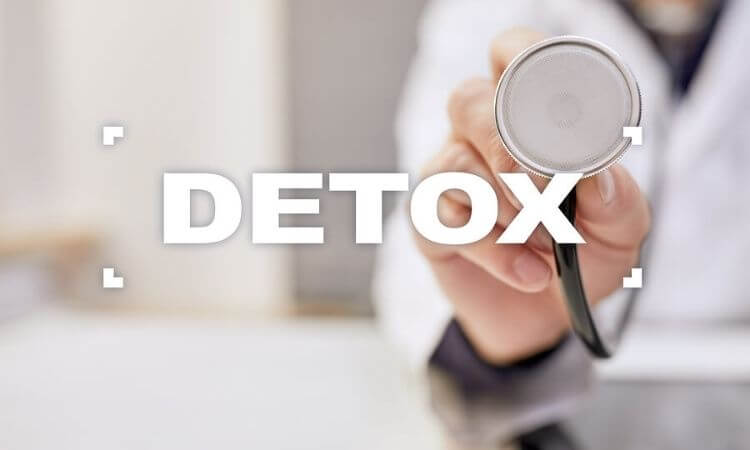
Rapid detox is a fast method of helping a person through the withdrawal period versus a regular detox which usually takes several days. Rapid detox is not generally recommended and is not considered to be effective in sustaining recovery. In extreme cases, rapid detox can be hazardous and even life-threatening.
When a person undergoes a rapid detox for opioids, he or she is given anesthesia for 4-6 hours while medications are used to clear the drugs from their system. These drugs may include heroin, fentanyl, or prescription painkillers such as oxycodone.
In essence, this method is intended to avoid the pain and discomfort of opioid withdrawal as the person is under sedation during the process. The idea is that when the person wakes up, the drugs will already be eliminated from their body and withdrawal symptoms will be mitigated. The person is then observed, usually overnight, before being discharged the next day.
Possible Risks of Rapid Detox
The American Society of Addiction Medicine (ASAM) warns against rapid detox, stating that the potential benefits do not outweigh the risks. The Centers for Disease Control and Prevention reports that there have been several deaths that resulted from this method of detox.
Possible effects of rapid detox include the following:
- Respiration problems
- Renal failure
- Pulmonary distress and failure
- Thyroid hormone suppression
- Elevated levels of cortisol
- Irregular cardiac functions
- Psychosis
- Delirium
- Suicidality
Withdrawal May Still Occur After Rapid Detox

One of the most significant drawbacks to the rapid withdrawal method is that adverse symptoms may still occur after it has been completed. It’s never recommended to quit using opioids “cold turkey,” or abruptly. When a person becomes dependent on them, there will be a severe withdrawal syndrome that onsets after the drugs are cleared from the body.
Opioid drugs inundate the brain with dopamine, a neurochemical that is associated with emotional regulation and the way a person feels reward and pleasure. With routine use of these drugs, the brain anticipates their interruption and no longer processes dopamine at a normal rate. When the drug’s effects wear off, withdrawal symptoms will manifest.
Opioid withdrawal has been described as similar to an unusually severe case of the flu. Heart rate, blood pressure, and respiration rates increase, body temperature rises, and chills and sweating occur. Other common effects include nausea and vomiting, diarrhea, headache, runny nose, watery eyes, and body aches and pains.
Anxiety, depression, restlessness, insomnia, irritability, and mental fog are also typical symptoms of opioid withdrawal. Rapid detox is intended to circumvent all of these effects by inducing them while a person is heavily sedated. However, it is an expensive procedure that isn’t without risk.
Rapid detox is merely a method of attempting to force opioids out of the system swiftly. Moreover, it does not address the underlying behavioral and emotional issues that contribute to opioid abuse. Imminent relapse and overdose are significant risks of using this method because these issues haven’t been identified and treated appropriately.
According to the National Institute on Drug Abuse, relapse rates for addiction are between 40-60%. These rates are comparable to those for other chronic diseases, such as type I diabetes and high blood pressure. The greatest danger of relapse after a period of sobriety is an increased risk for an overdose.
Once opioids are cleared from the body, the brain will begin to restabilize. The person will not be as tolerant to the same amount of the drug as they were before undergoing detox. For this reason, if they use the substance in a similar amount as they were accustomed to before, an overdose can occur. Because tolerance is lower, drug levels can become toxic much more rapidly.
Detox should always be performed as part of a comprehensive addiction treatment program and not as a self-contained method of recovery. Rapid detox is not an antidote to opioid addiction. Instead, it may mislead patients and offer false hope for a quick remedy that will likely not be effective on its own. A medical detox program should be followed by an intensive addiction treatment plan that can help a person learn how to maintain long-lasting recovery and decrease the chance of relapse.
Effective and Safe Detox Methods
Medical detox can be conducted on an inpatient or outpatient basis, and for opioid drugs, especially, it is considered to be ideal. Detox programs are frequently offered as part of more extensive residential treatment programs that provide 24/7 medical supervision for an average of 5 to 7 days. During this time, vital signs are continuously monitored, and other medical needs are simultaneously addressed.
Medications may also be administered. For an opioid detox, instead of discontinuing use abruptly, slowly tapering the client off the drug can prevent the trauma of sudden withdrawal. In detox, powerful opioids, such as heroin, are replaced with methadone or buprenorphine. These medications can minimize withdrawal symptoms while not providing the same “high” in which the person’s body is accustomed.
Buprenorphine is what is called a partial opioid agonist, as opposed to a full agonist like heroin. This property means that it doesn’t induce the same intense effects as full agonists, even if a person tries to abuse it. After a certain level of the drug is in the bloodstream, it stops working, reaching a ceiling or plateau of effectiveness. This design works as a deterrent for abuse.
Buprenorphine is also often combined with a dose of the opioid antagonist drug naloxone. Within buprenorphine combination products such as Suboxone, the antagonist component doesn’t activate unless the medication is altered for abuse. This mechanism serves as yet another deterrent to abuse.

During medical detox, health providers also use other medications to treat other symptoms of withdrawal. These include sleep aids, mood stabilizers, pain relievers, and products to help with gastrointestinal issues and diarrhea.
A detox program should provide emotional support and mental health care, as well. Folloing detox, patients should immediately be transferred into an addiction treatment program. Once there, clients will receive therapy, counseling, and other tools to encourage sobriety and discourage relapse.
Support group participation and holistic techniques may also be employed. These may include art and music therapy, meditation, yoga, health and wellness programs, etc.
Getting Help for Addiction
Midwood Addiction Treatment offers customized, evidence-based programs that feature services shown to be essential for the process of recovery. These include, but are not limited to, the following:
- Outpatient detox services
- Behavioral therapy
- Individual/family counseling
- Group support
- Substance abuse education
- Health and wellness education
- Music and art therapy
- Medication-assisted treatment
- Aftercare planning
If you are motivated to break free from the cycle of addiction, there is help available. We ensure that our clients receive the most effective treatment available and that they are provided with the tools they need to recover fully and sustain long-term sobriety. Contact us today!